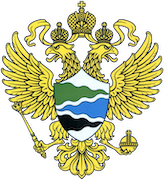
|
Save beauty, made by nature
Contacts:
Address: s. Ust-Koksa, ul. Zapovednaya, 1,
Phones: +7(38848)22-9-46, +7(38848)23-1-43,
E-mail: katunskiy-eco@mail.ru
Address: s. Ust-Koksa, ul. Zapovednaya, 1,
Phones: +7(38848)22-9-46, +7(38848)23-1-43,
E-mail: katunskiy-eco@mail.ru
Territory Protection
The territory protection service started its formation in 1992; however it had little success till summer 1993. At that period of time one of the main problems for the territory protection service was that the areas were still used by Kazakhstan for agricultural needs (as cattle pastures). Four districts were in charge of protection: Katandinskiy, Multinskiy, Verkh-Katunskiy and Urylskiy. The Urylskiy district was represented by Kazakhstan natives. Later on this district was restructured.
Nowadays there is a special state inspection consisting of 29 people directly responsible for the protection of the territory. All the inspectors are local inhabitants who know the territory really well, are sociable, able to ride a horse and handle a weapon
To make the territory protection more effective the nature reserve is divided into three districts: Katandinskiy, Multinskiy andVerkh-Katunskiy.
During the protection service existence four cordons were built on the nature reserve territory: at the mouth of the Tikhaya river, by lake Taimeniye, by lake Sredneye Multinskoye and at the mouth of the Kazinikha river. Besides, on the patrolled routes of the territory there are several huts where a state inspector can stay for night or rest.
Two methods are used to patrol the nature reserve territory: “group method” means patrolling the pre-planned routes of the territory by a group of two or three people; “cordon method” means permanent control of the territory from certain points on the main tourist routes.
In summertime patrolling is conducted mainly on horses, on foot and by motorboat. In winter the inspectors use skies and snow vehicles to make patrolling easier.
Each cordon point is equipped with a stationary radio station to connect with other stations and the central office. The protection service officers also have satellite phones and mobile radios.
In accordance with the federal law “On Specially Protected Natural Areas” (SPNA) the state inspectors are empowered to:
- verify the permission to stay on the SPNA
- verify the documents giving right to use natural resources or pursue any other activity on the territory of SPNA
- detain persons offending against the law of the Russian Federation “On Specially Protected Natural Areas” and deliver them to law-enforcement agencies
- draw up administrative offence reports against persons offending against the law and seize products and tools of natural resources illegal use;
- search motor vehicles, personal possessions and conduct personal search on the territory of SPNA;
- suspend any business contradicting the special protection mode regulations;
- use impact munitions in accordance with the law;
- bear and use arms being on duty.
Fire protection is included into the number of the state inspector functions. So, all the cordon points are supplied with firefighting equipment. The inspectors conduct constant monitoring of the areas subject to the fire risk by means of aerial observation and with the help of space-based fire monitoring system controlled by the Ministry for Natural Resources and the Environment of the Russian Federation. The inspectors are directly involved in fire-fighting operations on the nature reserve territory and adjacent areas.
All the state inspectors undergo annual performance rating and technical training to prove and improve their skills and knowledge of violations disclosure tactics, weapon employment strategy, protection service guidelines and regulations, basic safety guidelines and first aid giving. Besides, they get skills and knowledge required to work effectively as a guide.
Today an illegal presence on the territory is one of the most frequently occurred violations. Offenders are usually tourists from various parts of the Russian Federation and former Soviet republics who trespass the territory without special permission. The state inspectors draw up administrative offence reports against such tourists, and the nature reserve director acting as the chief inspector imposes an administrative penalty on these individuals. Responsibility for violation of the special protection mode is determined by the Code of administrative offences of the Russian Federation and by the Criminal Code of the Russian Federation.
In addition to their main functions of securing the special protection mode the state inspectors take part in environmental education and are in charge of ecological monitoring and scientific expeditions escorting.
Kazantsev Alexander Konstantinovich is the chief inspector at the protection service on the territory of the Katunskiy nature reserve.











